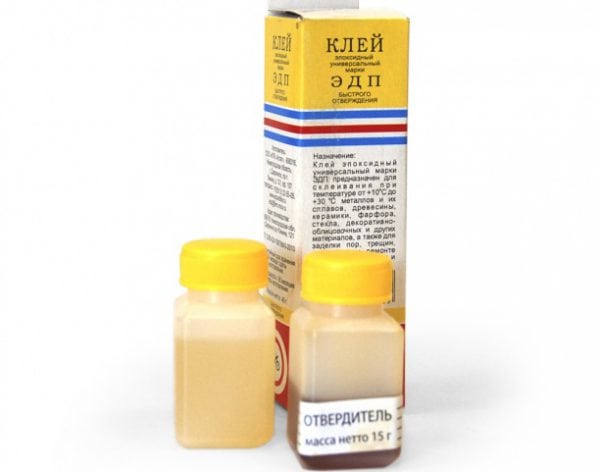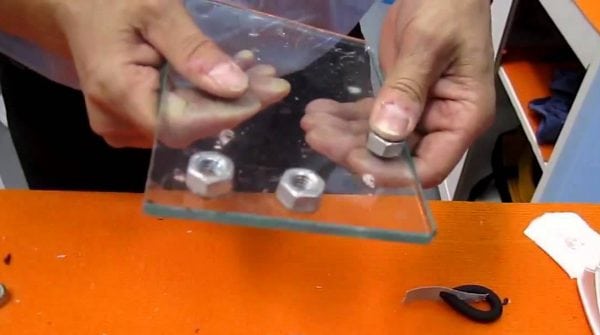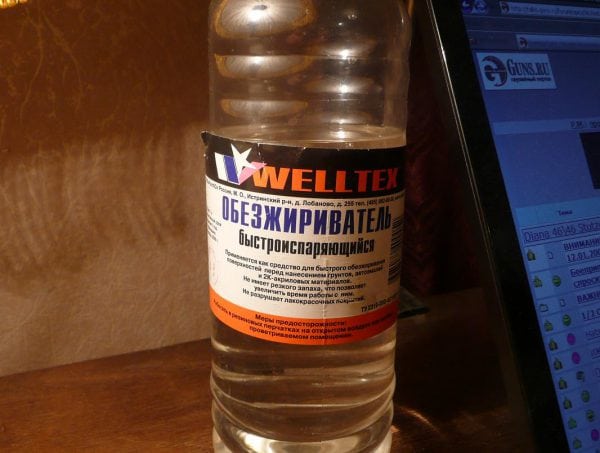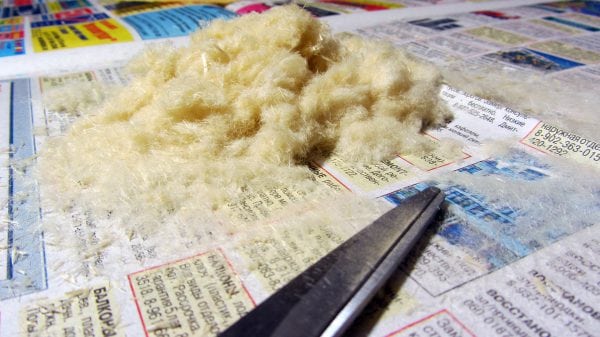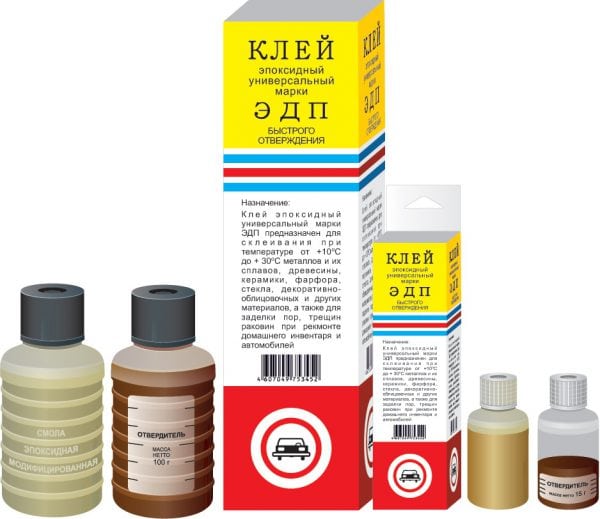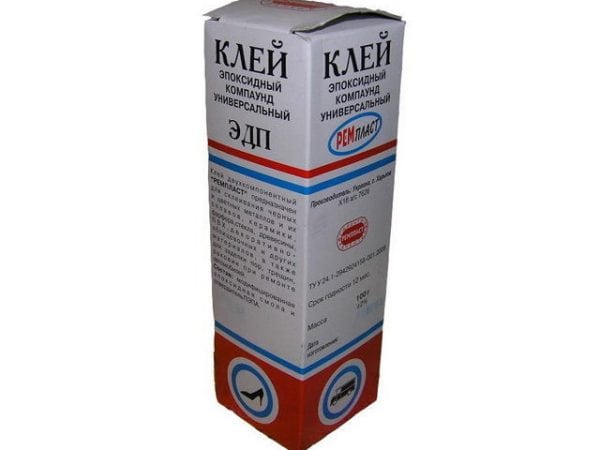The scope of epoxy resins is wide. In addition to pouring floors and creating many household products, epoxy-based products make high-quality adhesives. EAF epoxy adhesive - a composition that can be used in the repair, restoration of various surfaces, suitable for most known materials.
- Purpose and features of glue
- Properties and specifications
- Instructions for use
- Bonding preparation
- Adhesive preparation
- Fillers
- Glue application
- Cure time
- Precautionary measures
- Transportation and storage
- Quick-cure EDF glue
- Glue benefits
- The use of fast-curing EDF
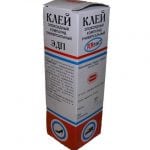
Purpose and features of glue
Universal EAF glue is a two-component agent (50/250 g), based on epoxy resin and a number of modifiers. In a separate package is a hardener designed for the polymerization of epoxy. During use, both components are mixed in the proportions recommended by the manufacturer. Curing of the adhesive occurs only after the introduction of the hardener, which is a full-fledged participant in the chemical reaction.
Glue is available in syringes and bottles, they do not differ in properties. Masters note the ease of use of the tool in the syringe - it is more accurately dosed, it is better applied. The description indicates that the adhesive is suitable for such materials:
- metal and alloys;
- glass;
- tree;
- china;
- ceramics;
- decorative facing materials.
A restriction in use is products that come in contact with food - glue is not allowed on them. Due to the liquid texture, the tool can be used to impregnate fillers - fiberglass, fiberglass, sawdust, paper, fabric. This is often required for automotive purposes, shipbuilding, for everyday life and modeling. Glue is used in the repair of bathtubs and plumbing, interior and furniture, acoustics, technology, electronics. They are restoring sports equipment, bumpers, boats.
to contents ↑Properties and specifications
Glue of this brand is characterized by the following properties:
- high mechanical strength;
- low shrinkage;
- excellent adhesion to most materials;
- electrical insulating ability (considered a dielectric);
- resistance to water (glue joint is waterproof).
to contents ↑After complete curing, the product can be subjected to further processing - grinding, polishing, sawing, drilling, and it can also be painted. If necessary, pigments are added to the epoxy before mixing with the hardener, and only then the adhesive composition is prepared. At a temperature of 18-25 degrees, the life time of the resin after hardener is 4 hours. The index of tensile strength at shear surfaces (for example, metal) is 8 MPa.
Instructions for use
The prepared composition hardens quickly, so it is recommended to use small portions for mixing. All products that need to be glued should be prepared in advance.To enhance the effectiveness, you can use fabric - its impregnation will improve adhesion. As the fabric usually use gauze, another thin material or fiberglass.
Bonding preparation
The surface must be washed, cleaned, degreased with alcohol, acetone. For cleaning, you can use an emery sheet with fine grain. As a result, the base should become dry, without dirt and dust. If a fabric will be used for impregnation, it also needs to be prepared, dried in air.
to contents ↑Adhesive preparation
Instructions for use states that glue EDP must be prepared immediately before use. The proportion is 10 parts of epoxy from the first package to 1 part of the hardener from the second. How to dilute the adhesive? Here is a description of the technique:
- put the bottle with epoxy in water with a temperature of 50-70 degrees;
- hold for 10 minutes;
- take all components in small volumes, based on the indicated proportions (for one division of the hardener in a measuring cup you will have 10 divisions of resin on a paper label on a jar);
- mix the resin and hardener well (within 3-5 minutes);
- leave air bubbles out for 10 minutes;
- apply 2 hours later, gelation will begin, and the application of glue with EAF will be ineffective, the quality of the seam will deteriorate.
Fillers
Various fillers are introduced into the composition for correction, improvement of its properties, they will have to be purchased separately. It can be plasticizers, pigments, and all of them are introduced only in dry form. Even a drop of water can spoil the glue. You should carefully read the characteristics of the fillers in the instructions to them and add only in the permitted volume. Typically, no more than 10-20% of fillers are added to maintain fluidity.
to contents ↑Glue application
The technique of applying glue to the fabric is as follows. A suitable cut is applied over the product, which will act as a reinforcing layer, after which glue is applied. If necessary, after 12-20 minutes, you can lay another row of mass.
to contents ↑Without fabric or gauze, the product is applied in a thin layer on both surfaces to be glued. After they need to be connected, tightly pressed. It is better to apply a vice or heavy objects. Excess glue must be removed immediately, after solidification - this will be very problematic. Leave the product pressed until it solidifies.
Cure time
The curing of the EAF glue lasts 24 hours, the time is indicated for operation at room temperature of 20-25 degrees. With its increase, the indicator decreases, with a decrease it rises.
Precautionary measures
Good ventilation should be provided; windows are opened in it or ventilation is turned on. There should not be any sources of fire near the place of work. It is necessary to glue products with observance of individual protection measures - wear a respirator, gloves, tight clothes. If the composition gets on the skin, they immediately rinse the affected area with soap, otherwise a burn, dermatitis, allergy may appear.
to contents ↑
Transportation and storage
EAFs are transported in covered vehicles in accordance with the rules of transportation established by GOST. Storage is permissible in dry rooms at a temperature of + 5 ... + 30 degrees, in the original packaging, away from moisture, sunlight. Shelf life is 2 years. Later glue can be used, but the quality of gluing is slightly reduced.
Quick-cure EDF glue
This product is produced in packages of 45/250 g, is two-component. In the first bottle are epoxy and a number of modifiers, in the second - hardener. Intended use of quick curing adhesive:
- connection of composite and metal products, objects from alloys, ceramics, glass, other materials;
- repair and sealing devices;
- sealing chips, defects, cracks.
to contents ↑Typically, this type of EAF glue is used if fast curing is required. The tool replaces cold welding.
Glue benefits
The adhesive composition has the following advantages:
- ensuring the desired level of strength after 6 hours from the time of application;
- work at a temperature of 10-30 degrees;
- low labor intensity of the process, the possibility of processing the adhesive joint even before the completion of the complete polymerization.
The use of fast-curing EDF
Before use, surfaces should be carefully prepared - they are cleaned, degreased, dried. To improve adhesion, sandpaper is used. A vial of resin is placed in water at a temperature of 60 degrees for 8 minutes. 1.5 parts of epoxy are mixed with 1 part of hardener, the resin has a life time of 30 minutes. You can use any fillers - cement, chalk, alabaster, fiber, graphite in a volume of up to 20%. The composition is applied in a thin layer on both surfaces, connect and press them. In the locked position, leave the product for 6 hours. After it is completely ready for use.

